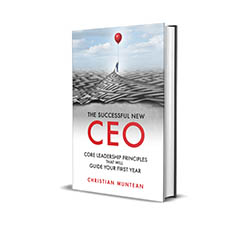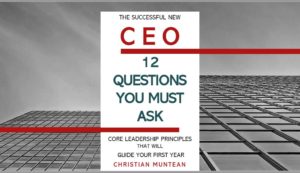Let Pain Be Your Teacher – but make sure you understand the lesson!

Summary: Pain doesn’t mean you are doing the wrong thing.

At 5:45 am I woke up. As I stepped out of bed, I noticed a sharp pain through my instep.
I didn’t think about it much. Just assumed that I hurt it training the previous day. Sometimes injuries don’t show up until you stop moving.
My normal morning routine is to take a short walk with a loaded pack. It’s an opportunity to prepare for the day and get the blood flowing a little.
That week I had upped my pace considerably. I wanted to take a longer route in the same amount of time. This time I limped through it. I was sore after. And the next day, the pain was even worse.
Now I began to recognize it – probably plantar fasciitis. I’ve had that before. My faster pace might have made some of the tissues angry.
That’s frustrating. I have a hunting trip and a BJJ tournament coming up. I don’t want to be hobbling for either of those. Plus…walking, in general, is easier when my feet don’t hurt.
Pain and Doing the Right Thing
I was doing the right thing. Light morning exercise. Nothing demanding.
On a quasi-technical level – what happened is I put more load or stress on the system – and the system didn’t like it.
Sometimes, doing the right thing is uncomfortable. Sometimes it even creates an injury.
It’s the dilemma of staying active. If you move your body, you’ll probably get hurt. If you don’t move your body, you’ll probably get sick. Either way – no one makes it out alive!
This is true in leadership as well.
If we do the right things, make the right changes, there is always a chance that something will hurt. A conflict will emerge. Someone won’t be happy. The system won’t keep up.
That’s because doing the right things – especially when pursuing growth or change – puts an unfamiliar load on the system. Sometimes even just a mild one. And sometimes the system gets irritated or breaks down.
Many leaders make critical errors right here.
- Some decide the pain means this was the wrong decision and go back to the status quo.
- Others ignore the pain (like I started out doing) and try to force the system to accept the change.
Neither approach is the right one.
I Will Make the Change but I Must Address the Pain
I’ll get back to my morning walks. And I plan to do so at the faster pace that caused the original problem.
But not until I’ve:
- Addressed the injury behind the pain and
- Identified a strategy to prevent future reinjuries
Systemic Solutions to Problems Caused from Doing the Right Thing
I love systems thinking. But I learned, a long time ago, most people don’t join me in that love.
In fact, when I say something like “systemic solutions” (which just rolls so gently off the tongue) many people assume what clinicians call a “flat affect”.
Other people call it, “staring at you with dead fish eyes”. Clinicians wanted to say that but it was too obvious. They had to come up with something less immediately understandable so insurance would reimburse for it.
Anyhow, a “system” is basically a fancy way of saying “how all the bits are connected”. And very often, when there is a problem somewhere, it’s helpful to not just look at the immediate problem but to examine the system.
For example, with my foot – it turns out that many of the muscles in my lower leg are abnormally tight. This creates additional tension for my foot. By addressing the lower leg along with the foot, I’m able to resolve the problem. That’s a systemic solution.
This is important. In the workplace, we hear the one person or team griping about a change they don’t like, we notice that quality is dropping, or that there is an increase in returns or callbacks.
Often we identify the person or team at ground zero and tell them to get their act together. Which might be the right answer.
But often, it helps to explore what is happening upstream and downstream of the problem. Especially if we know there has been a change in the load on the system.
Examples of Right Things that Might Cause Pain
- Growth of any kind
- Expanding to a new location
- Formalizing a process
- Creating a new layer of management
- Limiting decision-making authority
- Setting up financial controls
- Any process or policy that limits or prevents someone from doing something they were used to
- Defining expectations and how they’ll be measured
- Confronting poor performance
And so on.
We make a change. Then we feel a pinch.
Don’t ignore it and try to power through.
Don’t decide the pinch means “this was the wrong thing to do”.
Stop. Address and try to understand the issue. Learn from it.
Then start moving again. In many cases, this will mean continuing on with the growth or change. But often it will mean you’ve learned and improved how you are going about it some way.
Instead of pain being a limiter, pain can be a teacher, if you let it.
Take good care,
Christian
Are you interested in learning more about becoming a successful CEO? If so, get a free copy of my book The Successful New CEO. Not a new CEO? I’ve been told by “old hands” that they felt any CEO should read this. So, click here to get your copy today.
by “old hands” that they felt any CEO should read this. So, click here to get your copy today.
Let’s connect.
I’m passionate about helping leaders to create workplaces they love going to and increasing the value of the services they offer. My results-oriented approach is tailored to each client’s specific situation and needs. As a leadership coach, I have developed a wealth of resources to help you and your team grow and become stronger.
Weekly Newsletter – sign up to receive my weekly articles addressing critical leadership challenges and issues.
The Leadership Coach Podcast – In my podcast, we explore effective, high-impact, and enjoyable leadership. Subscribe.
Resources – Visit my website’s Resources page for e-books, webinars, training, and leadership coaching opportunities for you and your team.
There are 𝟭𝟮 𝗰𝗿𝗶𝘁𝗶𝗰𝗮𝗹 𝗾𝘂𝗲𝘀𝘁𝗶𝗼𝗻𝘀 to ask before accepting a new CEO position. Do you know what they are? Instantly download my free e-book here.
Find the value of your company with my free assessment tool: The Value Builder System
The Value Builder System™ is a 13-minute online questionnaire that evaluates your business on the eight factors that contribute more to its attractiveness and value. These factors are scored on a scale of 1-100. Businesses that score over 80 are likely to command 70%-100% higher value than others.
Opportunities
Free Resource: How To Accomplish More Without Doing More is a workbook I created to walk leaders through a process of helping you own your calendar, liberate your time, and still get more done. Download it for free!
Executive and Leadership Coaching: Do you feel overwhelmed? Are you not getting the results you expect from the effort you are putting in? Do you find yourself facing similar challenges time and time again? Would you like to change specific ways of relating or reacting? If you would like to experience predictable, measurable growth Contact me.
Profitable Exit Strategy Workshop: Are you a business owner or partner? Over 55? Starting to think about exiting your business or active management in the next 3-5 years?
- Curious about what your business might be worth?
- Would you like to discover the specific steps you need to take to increase its value and become highly attractive to a buyer?
- Are you planning on handing it over to family or employees and you want to ensure long-term success?
If so, contact me now
Categories
Get Christian’s Newest Book: Train to Lead

Download my free 10-page eBook:
How To Accomplish More Without Doing More:
Eight Proven Strategies To Change Your Life
Discover how to save eight hours during your workweek-even if you're too busy to even think about it. The resource every maxed out executive needs.

